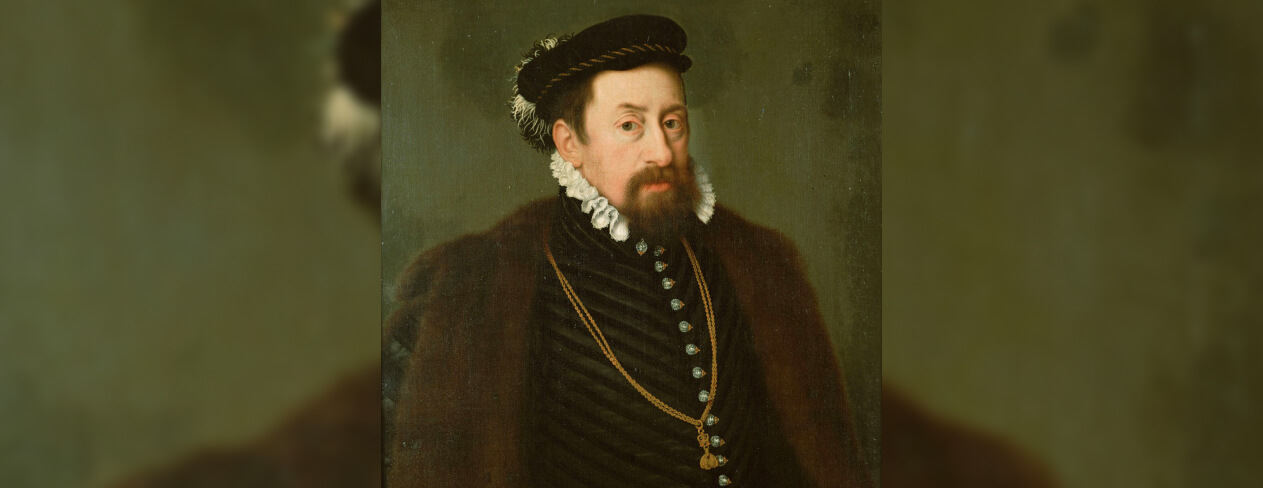
Emperor Maximilian II was born on 31 July 1527, the eldest son of Ferdinand I and Anne of Bohemia. In his youth, he was regarded as a promising commander, serving under his uncle Emperor Charles V in Italy and in religious conflicts against the Protestant Schmalkaldic League in Germany. As heir to the throne, Maximilian primarily governed the Austrian hereditary lands, defending them against Ottoman incursions.
Maximilian was an outgoing and charismatic figure, devoted to humanism and religious tolerance. Curiously, his amicable relations with several Protestant princes caused unease about his loyalty to the Catholic faith. After becoming emperor in 1564, he carefully navigated between the two reluctant confessional camps, trying to balance the exaggerated demands of both sides in order to prevent renewed hostilities. However, his attempts ultimately failed under his more intolerant successors. The war with the Turks was repeatedly renewed without decisive results, and the Emperor had to acknowledge Ottoman suzerainty over several eastern principalities.
During the reign of Maximilian, Vienna became the most populous city in Central Europe, with the humanist court as a vibrant centre of art and culture. The Hofburg was expanded with the new Renaissance wing, the Stallburg — today home to the Spanish Riding School. Maximilian’s personal book collection laid the foundation for the modern Austrian National Library.
The children of Charles V and Ferdinand belonged to the first generation of intermarriage between the Austrian and Spanish branches of the Habsburgs. Maximilian and his sister Anna married their cousins Maria of Spain and Philip II, the daughter and son of Charles V. Maria bore sixteen children, eight of whom reached adulthood, including the future emperors Rudolf and Matthias.
Maximilian died in 1576 at the age of 49.
Access to the Metatext via placing an order for an augmented product. See Terms of Use